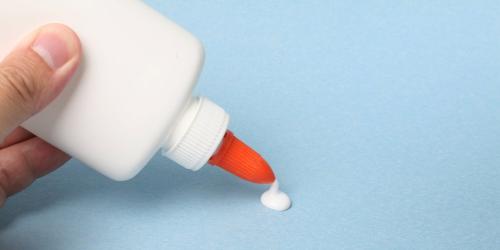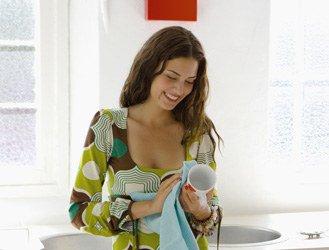The "3 cases and 1 bag" method
Anything that is ugly or useless does not deserve to be kept and even less to find a place in our closets. For a quick and efficient storage, we keep this rule: find 3 boxes and 1 garbage bag .
We take the objects one by one. We put them either in the box "to put away" (our favorite jeans ...), either in the box "to put away" (the toys found in the bathroom ...), or in the box "to give or sell " (the 3rd service foie gras marriage ...), or in the trash (old mustard glasses).
No need to spend a whole day, storage can be done little by little: 15 min a day, a little Monday night, a little Wednesday afternoon, etc.
The 3 laws of storage
The concept of "the margin of expansion"
Allow 30% extra space when you buy a "container" to store sweaters (for example, because it works with everything). Otherwise, with each purchase or gift, it will start from scratch.
The space obtained also gives a more "clean" aspect and facilitates storage ... And above all we know what is in our drawers and cabinets.
Storage and the law of proximity
It makes sense to store the butcher's knives in the kitchen drawer under the worktop. And the toothbrush near the sink. This is EXACTLY the law of closeness of storage .
In short, to save time, we put objects near the place where we use them ... and we collect them: brushes and combs, pens and papers, telephone and repertoire. This is the case, for example, felt pens children who draw only in the kitchen, magazines read in the toilet and keys seized in the entrance ...
To tidy up is also to follow the theory of movements
The more we use certain objects, the more they must be easy to take. How many movements do you make ... to drop a toothbrush into the glass by the sink? One only. And to catch the cake dish under the pile at the top of the kitchen cupboard? Take the step ladder, open it, go up, go down the first three dishes without falling, the next three without dropping them, grab the cake dish, replace the others, put away the stool ... At least 12. If l we use this dish once or twice a year, it's perfect.
On the other hand, it is better to keep everyday plates at your fingertips. More movement is needed to store an object, the less you have the courage to put it away.
Sharing the space
We divide to better tidy up and we learn to share space. To avoid the mixing of genres (the heart-shaped cookie cutter in the pretty Limoges cup), it's tricky to find containers or separations. For example, in a large cake pan, cookie cutters and baking pans are stored and, next to them, an iron box containing the treasures of the pastry (nuggets, yeasts, candied fruit ...) is placed. In a pretty wooden box, we store the tea bags and tea balls not far from the nice tea service.
It is also possible to partition the drawers with cardboard boxes, to fill the shelves with jars , the children's rooms with colored boxes, the basket salon. There is something for everyone, it's useful, practical and pretty.
Waltz labels for efficient home storage
It is often thought that labels are only used to find a tidy object. Not only. The label is a surefire way for everyone to know where to put things.
Even 4-year-old Charlotte can put her socks in a drawer where a picture of a sock has been glued. Embroidered, painted, photographed, calligraphed, drawn, printed, carved ... the label can be creative!
The parable of the peg
Once all the spaces are arranged according to the previous lessons, it remains only to be attentive ... There is always a place where the bazaar attracts the bazaar, for example, the pretty chair in the entrance, covered, every night, a big pile of coats. If you fix just above or next to a series of solid hooks, it will surely regain its original use. As the small table of the entrance will look more tidy if you install a basket (to throw the superfluous) and a basket to receive the papers to keep.
It will change the stacking of flyers, empty envelopes and invoices from the mailbox.
Some useful measures to better understand its storage:
Paperback: h. 19 cm x depth 13 cm
Ordinary books: h. 25 cm x depth 20 cm
Art books: h. 30 cm x depth 35 cm
DVD: 15 x 20 x 2 cm
CD: 15 x 15 x 1 cm
VHS cassettes: 14 x 21 x 4 cm
The wardrobe: about 60 cm deep for an adult wardrobe , 70 cm wide per person.
For the height, measure your longest garment and add 15 cm for the rod and hanger.
The shoes (in pairs):
- men: L. 30 cm x l. 20 cm
- women: L. 30 cm x l. 25 cm


